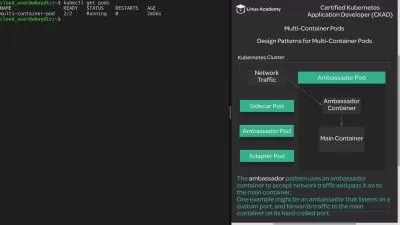Kubernetes: Infrastructure as Code with Pulumi
1:42:47
Description
Developers, infrastructure engineers, security engineers, and engineering leaders are increasingly using Pulumi for creating, deploying, and managing cloud infrastructure across multiple cloud platforms. Developers find Pulumi easy to work with because infrastructure specification is done using high level programming languages, not config files. In this course, Janani Ravi shares her knowledge using Pulumi, starting with the basics concepts and covering the installation of the Pulumi CLI. She then explains how to deploy containers and apps, how to configure Pulimi to set up a static website on AWS, and how to provision and deploy an app on Elastic Kubernetes Service on AWS.
More details
User Reviews
Rating

Linkedin Learning
View courses Linkedin Learning- language english
- Training sessions 32
- duration 1:42:47
- Release Date 2023/01/14






![Google Kubernetes Engine(GKE) : The Practical Guide [GCP]](https://traininghub.ir/image/course_pic/22212-x225.webp)

